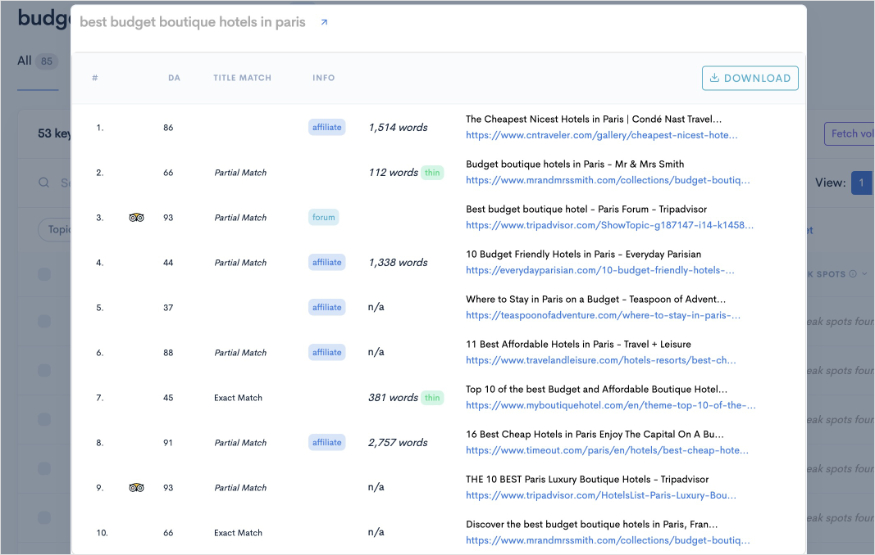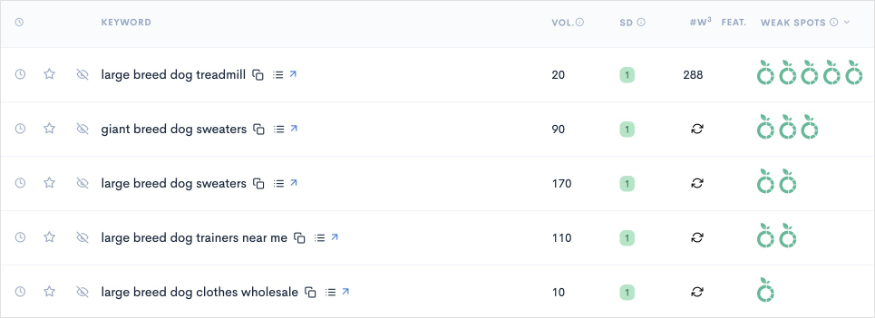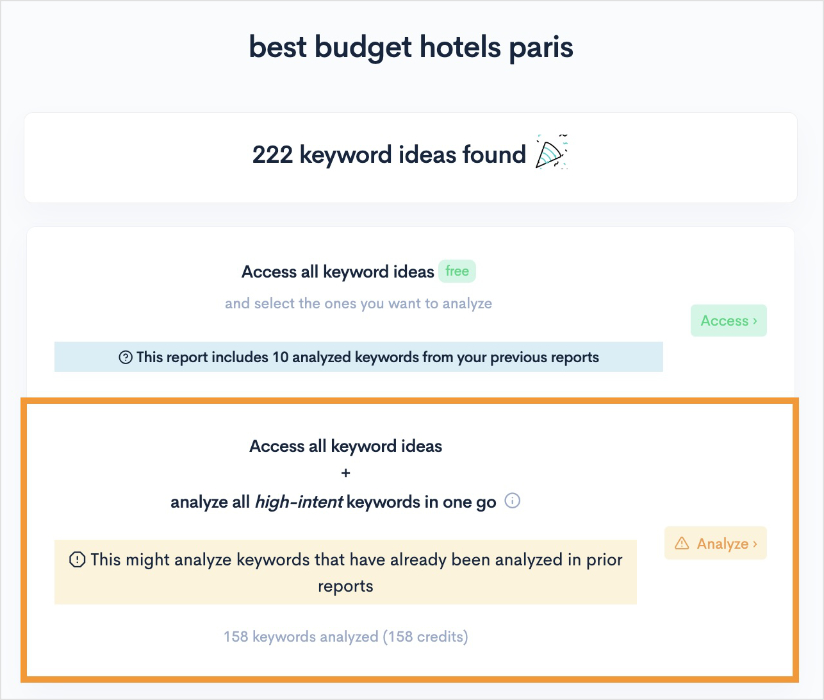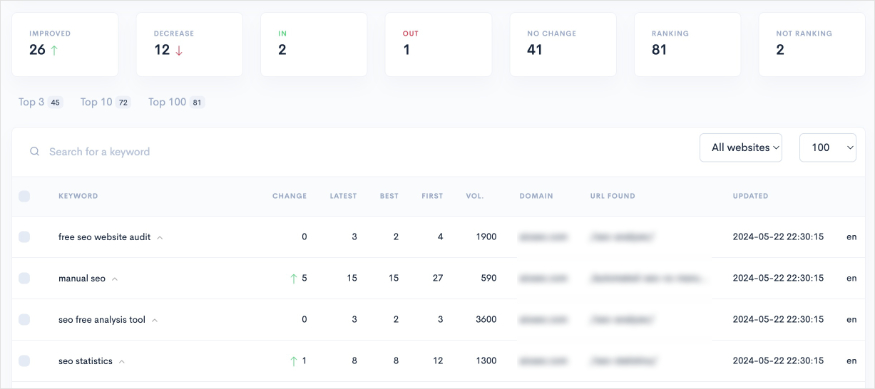9 SEO Secrets to Unlock Higher Traffic & Revenue
Gabriela Jhean
SEO secrets: fact or fiction?
While many growth strategies are well-known, some aspects can feel shrouded in mystery. You might hear whispers of search engine optimization secrets that guarantee top rankings. But are these claims legitimate, or just SEO fiction?
This article dives into the truth behind lesser-known SEO best practices. We’ll uncover 9 effective strategies that can unlock real results for your website — more traffic, more leads, and ultimately, more revenue.
Table of Contents
1. Content Is King — When It Caters to Search Intent
While it’s no secret that high-quality content is the cornerstone of SEO success, search intent is the key to creating it.
Search intent is the underlying reason or goal behind a user’s search query. It identifies what users are truly aiming to find when they enter specific keywords.
Now, here’s the thing about search intent when it comes to content creation: many website owners don’t take the time to understand it.
This can lead to content that’s well-written but misses the mark entirely.
For example, imagine writing an article about budget-friendly hotels in Paris for your travel blog. Your personal idea of low-cost, 3-star hotels could vary greatly from the post-college grad open to room-sharing in hostels.
Analyzing search intent would reveal this discrepancy, saving you precious time from creating content that doesn’t match the budget-conscious needs of your users.
So, how do you figure out the search intent behind a keyword?
It’s all about the SERP.
A search engine results page (SERP) analysis will reveal what users are actually searching for. And the type of content you should create.
LowFruits makes this process easy.
Once you’ve performed a keyword search in the KWFinder, you’ll get a list of keyword ideas to target in your content. When one catches your eye, you can click on View the SERP.

This action will open a pop-up window with the top 10 organic results from Google Search. You can click any URL to view the ranking page and learn how they address the topic. (You could also click the arrow to the right of this option to view these results directly on Google.)
Since Google ranks these pages highly, you’ll know you must produce something similar to fulfill search intent.
Then, make it better to outrank your competitors.

(In this example, we’d recommend picking a different keyword since our results show a high SERP difficulty score of 3 and no weak spots. Instead, this article shows you how to find profitable keywords you can actually rank for.)
2. Target Low-Competition Keywords
While high-volume keywords might seem like the holy grail of SEO, they can be fiercely competitive. Ranking for these terms often requires significant resources and established website authority.
Luckily, there’s a better way to approach your keyword optimizations.
Targeting low-competition keywords is a strategic SEO move for small businesses and new websites.
This tactic focuses on keywords with less competition and high ranking potential.
Website owners often miss these hidden ranking gems because they’re too busy focusing on the glitzy high-volume keywords. However, low-competition keywords bring users that are more likely to convert, making them extremely valuable for your business.
At LowFruits, our KWFinder is designed to help you uncover these ranking opportunities — fast.
Take this search for “big dog breeds,” for example.
Here are 5 keyword ideas with decent monthly search volumes, low SERP Difficulty scores (SD), and weak spots (websites with low domain authority). All these keywords would be easy to rank for.

Now, you just need to create a piece of content for your desired keyword. You would utilize this keyword in your on-page SEO to improve its chances of ranking in organic search.
3. Align Your Keywords With the Marketing Funnel
Speaking of keywords, another SEO secret is to align your keyword targets with the marketing funnel. This will help you understand where your customers are in the buying process and allow you to tailor content to that specific stage.
At the top of the funnel (TOFU), users are in the awareness stage, seeking information. They’re still identifying their problems or needs.
This is the most competitive stage to rank for, but content that answers common questions can serve it well. At this stage, you should aim to educate your audience instead of promoting your brand.

Next, you have the middle of the funnel (MOFU), often called the consideration stage. At this point, users have a clearer understanding of their needs and are actively seeking more specific information.
MOFU is a crucial stage where you can position your brand as a viable solution to their problem.
To build trust and credibility, focus on creating valuable content, such as guides and comparisons.
Finally, at the bottom of the funnel (BOFU), users are ready to take action. They have already performed research and are seeking the best option to fulfill their needs. At this stage, it’s crucial to target commercial and transactional keywords that indicate strong buying intent.
You can create persuasive landing pages and include calls-to-action (CTA) to encourage users to convert.
Targeting all areas of the marketing funnel is an excellent way to capture your target audience at all stages of the buying journey and build brand awareness.
Tip: LowFruits users can access and analyze high-intent keywords in one go when using the KWFinder. High-intent keywords have specific modifiers, like “best,” “how to,” “why,” and “alternative to.” These keywords are ideal for MOFU and BOFU content.

4. Tap Into How-To Tutorials
People love a good how-to guide.
How-to content capitalizes on search intent and positions your website as a valuable resource. Well-crafted tutorials demonstrate your expertise and establish trust with users actively seeking solutions.
Here are some tips for creating effective how-to content:
- Identify User Needs: Use keyword research tools to find keywords related to your niche and display clear informational intent (e.g., “how to change a tire,” “best way to clean stainless steel appliances”).
- Break it Down Simply: Provide clear, step-by-step instructions that are easy to understand, even for beginners.
- Visual Appeal is Key: Include high-quality images, screenshots, or videos to enhance your instructions and provide a more engaging experience.
By creating informative and easy-to-follow tutorials, you’ll provide genuine value to your audience and build credibility.
5. Make It Mobile-Friendly
A website needs to be optimized for smartphones and tablets so as not to leave potential customers behind.
Think about it: how often do you browse the web on your desktop computer anymore?
Most web searches now happen on mobile devices, and Google prioritizes mobile-friendly websites in search results.
A website that’s clunky or slow-loading on a mobile device will frustrate users and increase bounce rates. And even though bounce rate isn’t a direct ranking factor, it signals a poor user experience to search engines, which can negatively impact your SEO.
On the other hand, a website that delivers a seamless mobile browsing experience keeps users engaged, improves conversion rates, and ultimately strengthens your SEO performance.
The key to achieving this?
Responsive design.
A responsive design ensures your website automatically adjusts its layout and content to fit any screen size. This approach allows users to easily navigate your website, access information, and complete desired actions regardless of their device.
6. Weave Your Website Together With Internal Links
Internal linking connects different pages on your site via hyperlinks. You can think of it like a web of information, guiding users through your content.
Even though internal linking isn’t a total SEO secret, it’s an often overlooked strategy.
This is a mistake because effective internal linking offers many benefits for users and search engines.
From a user’s perspective, internal links make it easier to navigate your website and find related content. Imagine reading a blog post about the best hiking trails in Yosemite National Park. An internal link to a page detailing camping options near those trails would be a natural and valuable addition for the reader.
For search engines, it helps them understand your website’s structure and hierarchy. By strategically linking relevant pages, you’re telling search engines which content on your site holds the most weight and authority.
This can significantly improve your website’s overall SEO performance, as search engines can more effectively crawl and index your content.
Tool: For WordPress users, the All in One SEO (AIOSEO) plugin features Link Assistant, a powerful tool that streamlines the internal linking process. It identifies relevant content and populates linking suggestions directly in the WordPress editor. It’s fast and easy.
Tip: Don’t forget backlinks! Unlike internal links, backlinks come from external websites. They act like votes of confidence for your site, potentially boosting its authority in the eyes of search engines.
7. Speak the Language of Search Engines: Structured Data
Structured data organizes your website’s content in a format that search engines can easily understand. Think of it as adding labels and descriptions to your website that search engines can use to categorize your content.
Schema markup is a specific type of structured data that provides additional context and meaning to a web page. It’s a powerful SEO tool to help search engines understand the specific meaning of your content.
It can also be used to generate rich snippets on the SERP.
Rich snippets are enhanced search listings that provide users with additional information right on the SERP.
Let’s look at an example.
Imagine you have a food blog, and you’re sharing a lemon pound cake recipe. You could use recipe schema markup to share details like ingredients, cook time, and the average user rating.
Search engines could use this information to produce a recipe snippet like the one below.

Tool: For WordPress users, AIOSEO has a rich snippet schema generator that makes adding schema markup a breeze. It’s as easy as picking the schema type you want from a catalog, and AIOSEO will format it automatically for search engines.
8. Fresh Content Keeps Search Engines and Users Coming Back for More
Search engines love fresh content.
They prioritize websites that consistently deliver new and valuable information to users. This doesn’t necessarily mean churning out daily blog posts (although that can be part of your SEO strategy!).
The key is to regularly update your website with informative content that demonstrates your expertise and keeps users engaged.
Here are a few ideas for keeping your content fresh:
- Update Existing Content: Breathe new life into older blog posts by adding fresh data, statistics, or insights.
- Create Seasonal Content: Capitalize on seasonal trends and events to deliver timely and relevant content.
- Utilize Different Formats: Experiment with infographics, videos, or podcasts to cater to different learning styles and preferences.
By consistently providing fresh content, you signal to search engines that your website is active and relevant. This can lead to improved rankings, increased organic traffic, and more revenue.
9. Stay On Top of SEO Trends
The world of SEO is constantly evolving. Search engine algorithms are updated regularly, and best practices can change over time.
For busy business owners, we know it can be hard to keep track of it all.
But staying in the loop of SEO trends is a powerful way to outrank the competition. Plus, it doesn’t take much time when you know where to go.
Here’s how you can stay ahead of the curve without sacrificing time:
- Read SEO Case Studies: Learn the strategies that work from businesses that have already done it. We like All in One SEO Trends because they do third-party case studies, meaning you get real strategies that move the needle — not just some agency tooting its own horn.
- Follow SEOs on Social Media: Chances are you’re already spending some screen time on social media. Why not add some established SEOs to learn while you’re at it? Social media is an engaging way to get bite-sized information and expand your knowledge of SEO.
- Track Your SEO Performance With the Right Tools: Staying on top of your site’s organic performance is critical. Luckily, tools make that faster and easier than ever. The Rank Tracker helps you track your most important keywords and know when they’ve changed positions. It’s automatic, meaning you don’t have to do anything except check out the dashboard to see what’s changed.

Note: Your Rank Tracker Dashboard will not have the domain or URL blurred out.
Use These SEO Secrets and Watch Your Revenue Soar
These search engine optimization secrets aren’t tricks or loopholes — they’re powerful digital marketing strategies that prioritize user experience, high-quality content, and clear communication with search engines.
By following the 9 strategies above, you’ll be well-equipped to boost your website’s visibility, drive traffic to your site, and grow your revenue.
What’s next?
Put these SEO ranking tips into action and watch as your rankings rise to the top!